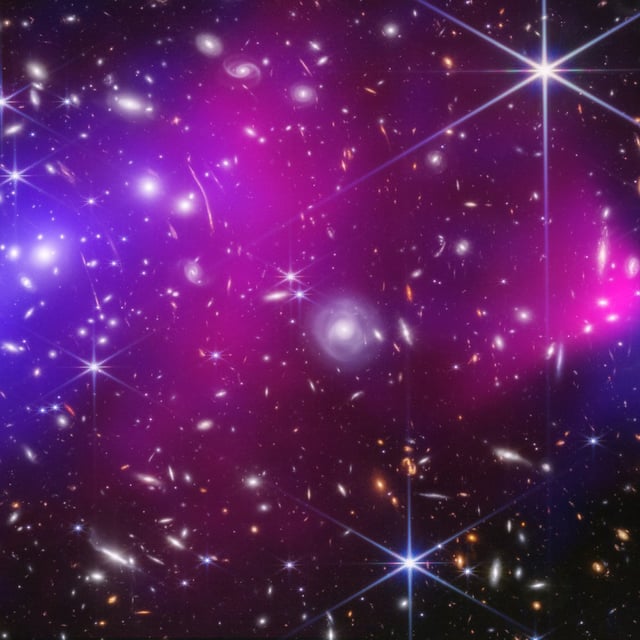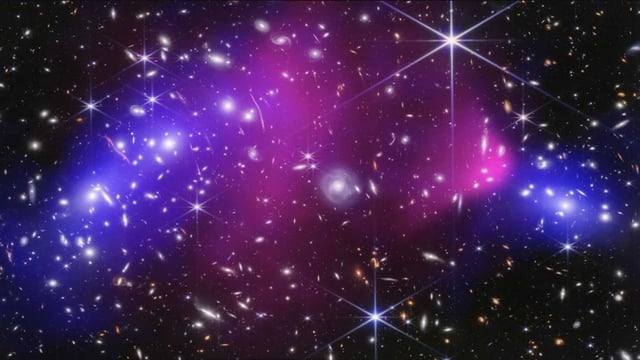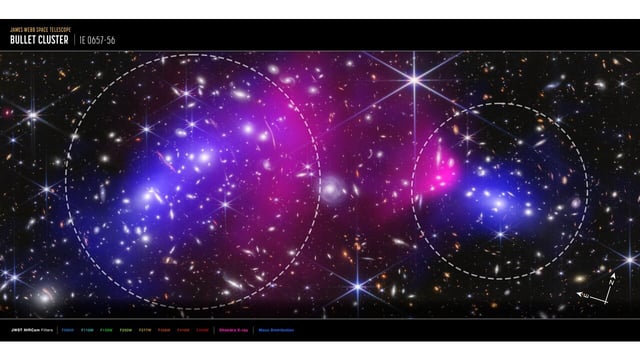Overview
- Webb’s NIRCam near-infrared imagery yielded the most detailed view of the Bullet Cluster to date and enabled the most precise mass measurement using the largest gravitational lensing dataset ever compiled.
- Strong and weak lensing analyses mapped dark matter across the cluster cores and outskirts, confirming that dark matter remains aligned with galaxies and showing negligible self-interaction.
- Light from free-floating intracluster stars was verified as a reliable tracer of dark matter even in the turbulent aftermath of the collision.
- Unusual mass clumps and elongated structures discovered in the new data suggest the Bullet Cluster formed through multiple galaxy cluster collisions over billions of years.
- Future wide-field infrared imaging by the Nancy Grace Roman Space Telescope, scheduled for launch by May 2027, will complete mass estimates and allow detailed reconstruction of the cluster’s full collision history.


